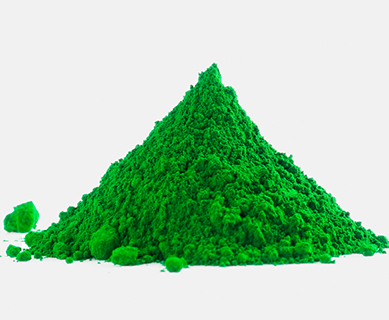A Selection of Pigments Suitable For Plastics Materials
Pigments are organic or inorganic particles added to a polymer foundation to give it a specific colour or function. Are you looking for thorough information on plastic pigments? Examine the many pigment and colourant families used in the plastics industry (organic, inorganic, and carbon black) and their key characteristics, performance aspects, and processing options.
Pigments - Major Families & Performance Properties
Pigments are insoluble organic or inorganic components mixed with the polymer to colour the plastic. Organic pigments can be difficult to disperse and clump together (pigment particles). The end product may contain defects and dots due to this clumping.
Inorganic pigments, on the other hand, such as metal oxides and sulphides, carbon black, and so on, are more easily disseminated in the resin. The most extensively used inorganic pigment in the plastics sector is titanium dioxide.
Pigment families are divided into:
- Organic pigments
- Inorganic Pigments
- White pigments
- Carbon black
- Aluminium pigments
- Special effect pigments, and
- Other pigments
Let's start with a basic understanding of pigment's important performance features in plastic applications.
Weatherability or ageing, light fastness, warping or nucleation, and transparency are critical performance aspects of pigments in plastics.
Weatherability / Aging
The use of plastic products can be shortened by exposure to sunlight and some artificial lights. As a result, UV protection and weather-resistant colours are typically required for polymers used outside.
Outdoor exposure experiments in the affected climatic region(s) are required to measure weathering resistance in practice. This isn't always an option. Accelerated testing is a popular alternative: CYCLE WOM 119.
The light stabiliser system must be examined with the pigment composition and the end product's stipulated fastness parameters.
Light Fastness
Lightfastness is a property of the colour fastness of a plastic material when applied in indoor applications (Exposure to UV radiation without coming into direct contact with water). If a pigment has good lightfastness, it does not always mean that it has good weather-fastness.
Pigment choosing for plastics utilised in indoor applications relies on specific factors, like:
- Polymer type
- The concentration of the pigment
- Presence of titanium dioxide (which typically accelerates fading)
- Required Light Fastness
- Service conditions
Pigment performance can also be influenced by the surface of the article, processing heat history and stabilisation package. Generally, inorganic pigments exhibit superior lightfastness than organics. Tables below rank the light fastness of the main families of organic pigments.
Warping / Nucleation
The degree of crystallinity and the speed of crystallisation determine the final properties of a plastic article. These characteristics are influenced by organic pigments during the cooling phase of plastic production, especially in HDPE injection moulding.
This can result in:
- Decreased mechanical stability
- Influence on dimensional stability
- Warping
- Shrinkage
Transparency
Transparency is usually achieved by lowering the pigment particle size as feasible. This is accomplished by covering the particles as soon as they are created, preventing the formation of crystals. Rosin or rosin derivatives are the most typical materials utilised for this coating. This is especially useful for printing ink pigments that require a high level of transparency, and it has the added benefit of making such pigments easier to spread.
Pigments made of iron oxide can be opaque or translucent. Because transparent inorganic pigments are commonly utilised for metallic finishes, they constitute an important type of inorganic pigments. Their excellent transparency creates a pleasing appearance, and their weatherability resistance improves the weatherability of pigments with which they can be blended. A synergistic effect is what this is called. Transparent iron oxides have a crystal structure and rely on small particles.
- Dispersion on Transparency - By breaking up agglomerates of particles into individual parent particles, the dispersion operation can affect transparency. On the other hand, the dispersion process does not split apart primary particles. All that is left is to maximise the pigment's original particle size. A small particle's transparency will be maximised with good dispersion.
- Measurement of transparency - The coating's transparency is determined by placing it on a black and white contrast chart and measuring the colour difference. The larger the colour difference, the more transparent the material.
Types of Organic Pigments Suitable for Plastics
Organic pigments are made up of various chemical families and have a wide range of qualities. They're best for applications that require a lot of tinting power and bright colours, whereas inorganic pigments are best for applications that require a lot of opacity.
Organic pigments can be divided into three types:
- Polycyclic
- Metal complexes
- Azo (Mono- and Di-)
Classical and high-performance colours are provided for each category. The pigment's performance will be determined by:
- Crystallinity
- Chemical structures
- Particle size and size distribution
- Surface properties
Let's look at the organic components that drive a particular colour pigment.
Inorganic Pigments Frequently Used in Plastics
The advantages of inorganic pigments for polymers and plastics are given below.
- Lightfast
- Easy dispersing
- Insoluble, avoiding migration tendencies
- Heat stable
- Opaque
- Weatherable
Some inorganic pigments, especially those containing ions capable of several oxidation states (for example, Pb, Hg, Cr, Cu, Fe), darken when exposed to light. Darkening is also a common symptom of thermal deterioration. The shear resistance is not an issue with inorganic pigments, and they are cost-effective to utilise.
Several inorganic pigments have a high IR reflectance for a given visible colour. Inorganic pigments are utilised in applications where surfaces remain calm and resistant to the environment, such as roofing, decking, and car exteriors. This saves money and energy while also extending the life of the substrate by preventing damage from the sun's heat.




